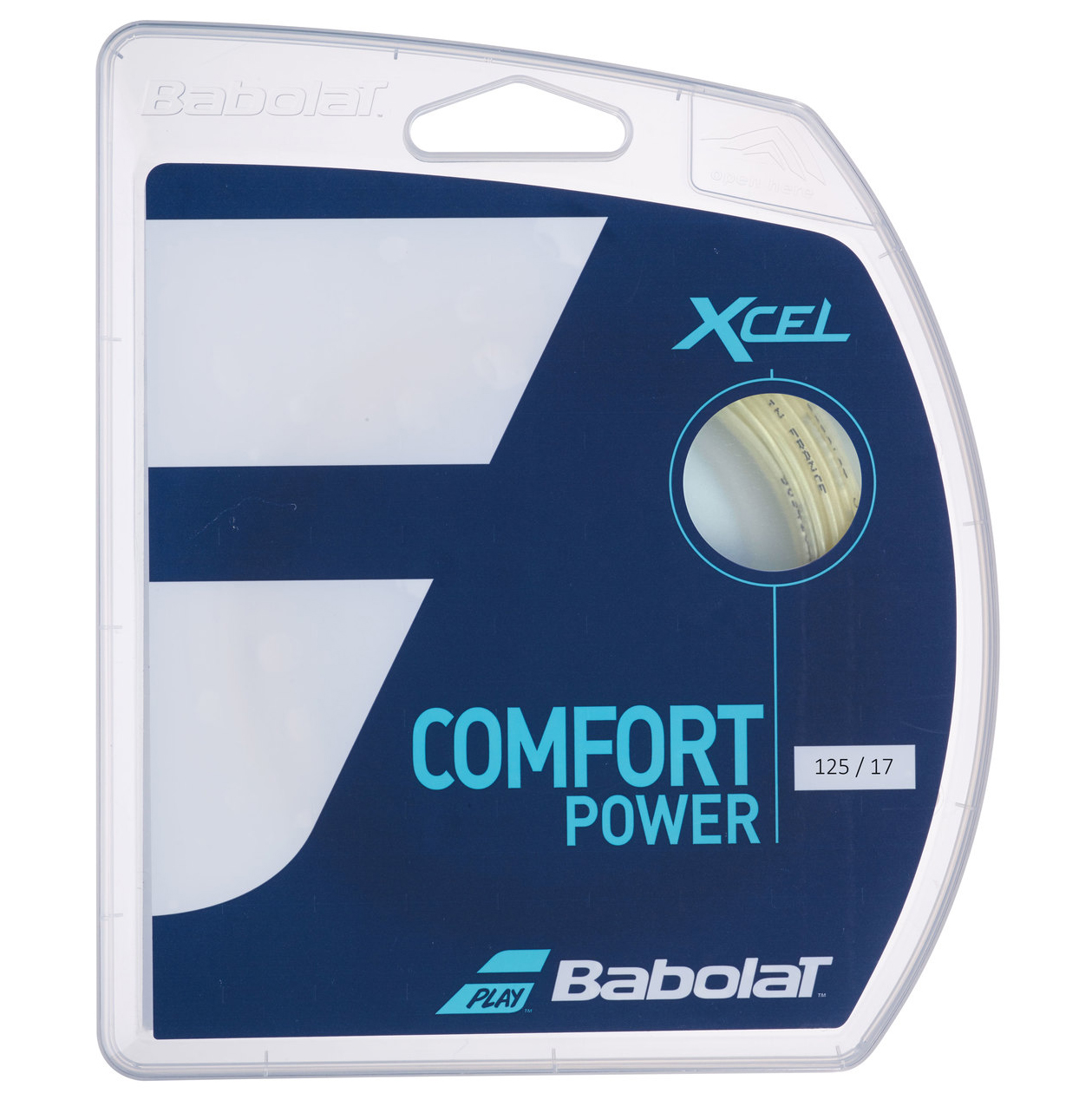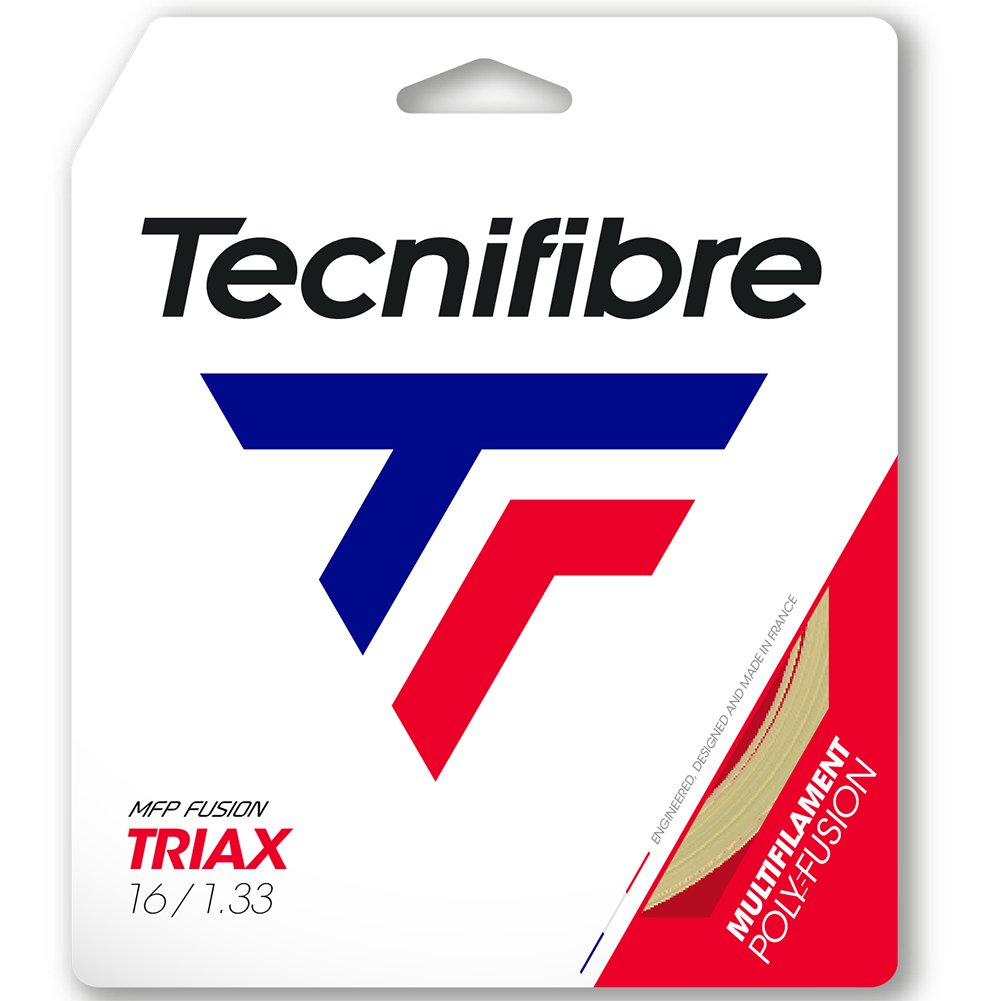- My Account:
- Login
- Register
- (1,323 reviews)
Your Basket - 0 Items - £0.00
How to choose the correct Tennis String
With many different tennis string options it can be difficult to try and work out which string may be best suited to your game. Picking the correct string is just as important as having the correct racket, and hopefully by the end of this blog we will have cleared some of the confusion. There are two main things to consider when choosing a tennis string: String Type and String Tension.
String Type
There are 4 main types of string: Synthetic Gut, Multifilament, Natural Gut and Polyester.
Synthetic Gut strings are nylon based strings with a solid core, that are great for beginners. They are usually the cheapest strings on the market that offer an all-round performance, but don't offer anything extra to your game.
Multifilament strings use pliable synthetic fibres to absorb shock and give extra power behind the ball. They offer an affordable alternative to natural gut strings, as they have very good playability, which is softer on the arm and maintains the tension, however the string is less durable for big hitters. Our most popular multifilament strings are Wilson Sensation and Babolat XCel.

Natural Gut strings are the game's most iconic string type, it has been around since the 1800s but no manufacturer has been able to create alternative that matches its playing ability. This type of string is ideal for comfort and power, and retains the tension longer than any other type of string, but does come at quite a cost.
Polyester strings are ideal for advanced players who want to get more control, spin and durability from their strings. They use a monofilament construction to offer more control to big hitters without the fear of hitting the ball out the court. Some polyester strings are aimed at adding more spin to the ball (e.g. Babolat RPM Rough and Head Lynx Edge) as they have an edge to the string that adds more grip to the ball. Our most popular polyester strings are Babolat RPM Blast and Head Lynx.

Many of the current players have combined the Polyester and Multifilament strings as a hybrid string bed that offers the best of both worlds. By using a polyester string in the mains you get the control and durability and by adding a multifilament string to the crosses offers more power and comfort on the arm. For example, Roger Federer uses Champion Choice hybrid string which consists of a strong polyester and a natural gut string.
Tecnifibre have created a new generation of strings - Tecnifibre Triax! It is the 1st multifilament string with co-polyester fibres to provide the perfect balance between spin, control and comfort all in one string. By using co-polyester fibres it increase firmness by upto 15% compared to a classic multifilament, as well as increasing shock absorbtion by 15% for great all round performance.

Tennis strings also come in different gauges (thickness), with the most popular choice being 1.25mm or 1.30mm. A thicker string tends to be more durable whereas a thinner string offers greater feel.
String Tension
Many people believe that the tighter the string tension, the more power you can generate, however this isn't the case. A looser string bed will generate more power as it produces a trampoline-like effect but will reduce the control.
All rackets should come with a specific tension range from the manufacturer (generally around 50-60lbs), if the racket is strung tighter than the recommended range it may void your warranty. For players who are uncertain about what tension to choose, we suggest starting off at 55lbs. This way the next time you come to have the racket restrung you have a starting point to know if you want to get more power or control from your strings. If you wanted more power we would suggest 52lbs and for more control, around 57lbs. One exception to these recommendations is when using the Luxilon Smart string. This string has been developed to provide high performance from lower tensions, it is recommended to be strung at 44 +/- 4lbs as it adjusts to the force of the swing. It is important to try and keep a record of what string and tension you had, so you can work out which set up works best for you and the set up may not always feel the same if you change rackets.
Also, you shouldn't always wait for your strings to break, a good rule of thumb is however many times you play tennis a week, is how many times you should have your rackets restrung a year. For example, if you play three times a week, you should get your rackets restrung 3 times a year.
If you have any further questions about tennis restrings, then please get in contact with us via customerservice@pdhsports.com and we will happily talk through the available options.
String Type
There are 4 main types of string: Synthetic Gut, Multifilament, Natural Gut and Polyester.
Synthetic Gut strings are nylon based strings with a solid core, that are great for beginners. They are usually the cheapest strings on the market that offer an all-round performance, but don't offer anything extra to your game.
Multifilament strings use pliable synthetic fibres to absorb shock and give extra power behind the ball. They offer an affordable alternative to natural gut strings, as they have very good playability, which is softer on the arm and maintains the tension, however the string is less durable for big hitters. Our most popular multifilament strings are Wilson Sensation and Babolat XCel.

Natural Gut strings are the game's most iconic string type, it has been around since the 1800s but no manufacturer has been able to create alternative that matches its playing ability. This type of string is ideal for comfort and power, and retains the tension longer than any other type of string, but does come at quite a cost.
Polyester strings are ideal for advanced players who want to get more control, spin and durability from their strings. They use a monofilament construction to offer more control to big hitters without the fear of hitting the ball out the court. Some polyester strings are aimed at adding more spin to the ball (e.g. Babolat RPM Rough and Head Lynx Edge) as they have an edge to the string that adds more grip to the ball. Our most popular polyester strings are Babolat RPM Blast and Head Lynx.

Many of the current players have combined the Polyester and Multifilament strings as a hybrid string bed that offers the best of both worlds. By using a polyester string in the mains you get the control and durability and by adding a multifilament string to the crosses offers more power and comfort on the arm. For example, Roger Federer uses Champion Choice hybrid string which consists of a strong polyester and a natural gut string.
Tecnifibre have created a new generation of strings - Tecnifibre Triax! It is the 1st multifilament string with co-polyester fibres to provide the perfect balance between spin, control and comfort all in one string. By using co-polyester fibres it increase firmness by upto 15% compared to a classic multifilament, as well as increasing shock absorbtion by 15% for great all round performance.

Tennis strings also come in different gauges (thickness), with the most popular choice being 1.25mm or 1.30mm. A thicker string tends to be more durable whereas a thinner string offers greater feel.
String Tension
Many people believe that the tighter the string tension, the more power you can generate, however this isn't the case. A looser string bed will generate more power as it produces a trampoline-like effect but will reduce the control.
All rackets should come with a specific tension range from the manufacturer (generally around 50-60lbs), if the racket is strung tighter than the recommended range it may void your warranty. For players who are uncertain about what tension to choose, we suggest starting off at 55lbs. This way the next time you come to have the racket restrung you have a starting point to know if you want to get more power or control from your strings. If you wanted more power we would suggest 52lbs and for more control, around 57lbs. One exception to these recommendations is when using the Luxilon Smart string. This string has been developed to provide high performance from lower tensions, it is recommended to be strung at 44 +/- 4lbs as it adjusts to the force of the swing. It is important to try and keep a record of what string and tension you had, so you can work out which set up works best for you and the set up may not always feel the same if you change rackets.
Also, you shouldn't always wait for your strings to break, a good rule of thumb is however many times you play tennis a week, is how many times you should have your rackets restrung a year. For example, if you play three times a week, you should get your rackets restrung 3 times a year.
If you have any further questions about tennis restrings, then please get in contact with us via customerservice@pdhsports.com and we will happily talk through the available options.
14 August 2020